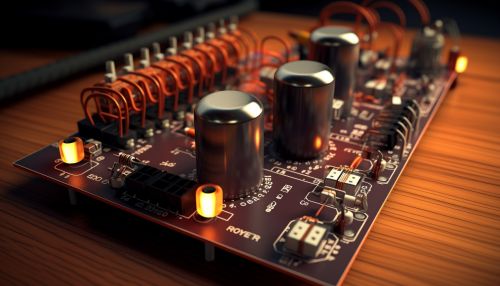Circuit diagram
Introduction
A circuit diagram (also known as an electrical diagram, elementary diagram, or electronic schematic) is a graphical representation of an electrical circuit. It uses simplified conventional symbols to visually represent electrical circuits and shows how components are interconnected by lines. The presentation of the interconnections between circuit components in the schematic diagram does not necessarily correspond to the physical arrangements in the real device.
Symbols and Notations
Circuit diagrams are composed of two things: symbols that represent the components in the circuit, and lines that represent the connections between them. Therefore, to understand how to read a circuit diagram, one must learn what the schematic symbol of a component looks like. It is also necessary to understand how the components are connected together in the circuit.
Resistors
The most common symbol for a resistor in a circuit diagram is a zig-zag line. Resistors are passive devices that introduce resistance to the flow of electric current in a circuit. The resistance is measured in ohms.
Capacitors
A capacitor symbol in a circuit diagram is a short parallel line that is used to store energy electrostatically in an electric field. The forms of practical capacitors vary widely, but all contain at least two electrical conductors separated by a dielectric.
Inductors
An inductor, also called a coil or reactor, is a passive two-terminal electrical component which resists changes in electric current passing through it. It consists of a conductor such as a wire, usually wound into a coil.
Diodes
A diode is a two-terminal electronic component that conducts current primarily in one direction; it has low resistance in one direction, and high resistance in the other. A semiconductor diode, the most commonly used type today, is a crystalline piece of semiconductor material with a p–n junction connected to two electrical terminals.
Reading Circuit Diagrams
Reading a circuit diagram involves understanding the symbols and the connections between components. It's important to understand the flow of current and the function of each component in the circuit.


Designing Circuit Diagrams
Designing a circuit diagram involves choosing the components, determining the values of the components, and connecting them together in a way that will produce the desired electrical behavior. The complexity of the circuit diagram can range from a simple LED light circuit to a complex CPU design.
Software for Creating Circuit Diagrams
There are several software tools available for creating circuit diagrams. These include both free and paid options, and they range from simple tools for creating basic diagrams to advanced software for complex electrical and electronic system design.
Applications of Circuit Diagrams
Circuit diagrams are used in the design, construction, and maintenance of electrical and electronic equipment. They are also used to understand and troubleshoot existing circuits.
